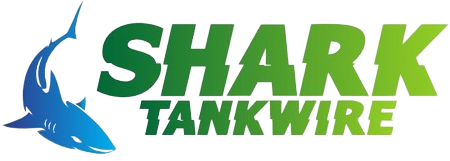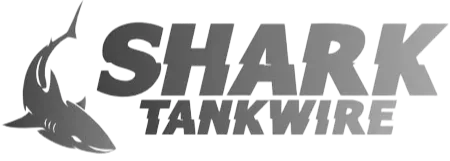Did Busy Box get an investment on Shark Tank Season 13? No, Busy Box did not secure an investment on Shark Tank Season 13.
Summary
- Busy Box pitched on Shark Tank Season 13, seeking $200,000 for 15% equity.
- The product is an illuminated sign designed to prevent interruptions.
- Despite its unique concept, Busy Box did not receive an investment from the Sharks.
- The reasons for the lack of investment are not explicitly stated in the provided information.
- The Busy Box website is not available in the given details.
Busy Box Shark Tank Update | Shark Tank Season 13
What is Busy Box?
Busy Box is an illuminated sign designed to curb interruptions in workspaces. It’s a simple yet effective tool that signals to others when you’re in a state of deep focus or simply need some uninterrupted time.
The problem it aims to solve
Interruptions are a constant challenge in many work environments. They break concentration, disrupt workflow, and can significantly impact productivity.
Busy Box offers a visual cue that discourages interruptions, fostering a more focused and productive atmosphere.
Busy Box Shark Tank Pitch
| Entrepreneurs | Steve Skillings and Conor Smith |
|---|---|
| Business | Busy Box |
| Ask | $200,000 for 15% equity |
| Deal | No deal |
| Sharks | Mark Cuban, Barbara Corcoran, Kevin O’Leary, Lori Greiner, Robert Herjavec |
| Season | Season 13 |
| Original Air Date | January 20, 2023 |
| Website | Busy Box |
| Key Points of Pitch |
|
| Why Sharks Declined |
|
1. Busy Box’s ask: $200,000 for 15%
The Busy Box team entered the Shark Tank seeking a $200,000 investment in exchange for 15% equity in their company. This valuation implied a company worth of approximately $1.33 million.
2. Demonstration of the product
During their pitch, the entrepreneurs demonstrated how Busy Box works. They showcased its simple operation: turning it on illuminates the sign, signaling to others that you’re busy and shouldn’t be disturbed.
They also highlighted its potential use in various settings, from offices and homes to libraries and shared workspaces.
3. Sharks’ initial reactions
The Sharks were intrigued by the concept of Busy Box and acknowledged the problem it addresses. However, they also expressed concerns about the product’s market size, potential competition, and scalability.
Some Sharks questioned whether the product was unique enough to stand out in a crowded market, while others were hesitant about its potential for significant growth.
Why Didn’t Busy Box Get an Investment?
1. Potential reasons for the Sharks’ lack of interest
Several factors might have contributed to the Sharks’ decision not to invest in Busy Box:
- Market Size and Competition: The Sharks might have perceived the market for Busy Box as being relatively small or niche. Additionally, they might have been concerned about competition from existing products or solutions, such as noise-canceling headphones or apps that block notifications.
- Scalability: The Sharks often seek investments in businesses with high growth potential. They might have questioned Busy Box’s ability to scale significantly beyond its current form or target market.
- Profit Margins and Pricing: Concerns about manufacturing costs, pricing strategies, and potential profit margins could have played a role in the Sharks’ decision.
2. Analysis of the product’s market viability
While Busy Box addressed a common problem – interruptions – its market viability might have been limited.
The product’s simplicity, while an advantage in some respects, could also be seen as a disadvantage. It lacked advanced features or customization options that might appeal to a broader audience.
Additionally, its reliance on a visual cue alone might not be sufficient for some work environments or individuals.
3. Lessons learned from Busy Box’s experience
Busy Box’s Shark Tank experience offers valuable lessons for entrepreneurs:
- Market Research and Validation: Thorough market research is crucial before pitching a product. Understanding the target market, competition, and potential challenges can help entrepreneurs refine their product and pitch.
- Scalability and Growth Potential: Investors look for businesses with the potential for significant growth. Demonstrating a clear path to scalability can make a pitch more compelling.
- Product Differentiation: In a competitive market, having a unique selling proposition or differentiating features can be critical for success.
While Busy Box didn’t secure an investment on Shark Tank, its journey highlights the importance of careful planning, market validation, and a clear vision for growth when seeking investment.
Busy Box Update
1. What has happened to Busy Box since Shark Tank?
Despite not securing a deal on Shark Tank, Busy Box has continued to operate and grow. The company has maintained an active presence on social media platforms like Instagram, TikTok, and Facebook, engaging with their audience and promoting their product.
They’ve also expanded their marketing efforts to highlight the versatility of the Busy Box, encouraging its use beyond just a “do not disturb” sign.
2. Is the product still available?
Yes, Busy Box is still available for purchase. Customers can buy it directly from the company’s website or through online retailers like Amazon.
3. Any new developments or improvements?
Busy Box hasn’t just stayed stagnant since its Shark Tank appearance. The company has been working on new products to expand its offerings.
One exciting development is the BusyBox Pixel, which features a pixelated display for added customization and functionality. While its launch has been delayed due to the global chip shortage, it’s expected to be available soon.
Furthermore, Busy Box emphasizes providing free software updates for life, ensuring their products stay current and user-friendly. They’re focused on building a loyal customer base by offering long-lasting products with hassle-free support.
Overall, Busy Box demonstrates that even without a Shark Tank investment, businesses can thrive with determination, adaptability, and a commitment to serving their customers.
FAQs
Is Busy Box still in business?
Yes, Busy Box is still in business and actively selling its products.
Where can I buy a Busy Box?
You can purchase a Busy Box directly from their website or through online retailers like Amazon.
What other products are similar to Busy Box?
While Busy Box offers a unique physical solution, there are apps and browser extensions that provide similar “do not disturb” functionality for digital devices.
Does Busy Box offer any warranty or guarantee?
Yes, Busy Box offers a one-year warranty on their products.
Can I customize my Busy Box?
The original Busy Box has a fixed message, but the upcoming BusyBox Pixel will allow for custom messages and animations.
The Bottom Line
Busy Box’s journey on Shark Tank and beyond is a testament to the resilience and determination of entrepreneurs. Despite not securing an investment, they’ve continued to innovate and grow their business. They serve as a reminder that success is often built on perseverance, adaptability, and a deep understanding of customer needs.
While the Sharks might not have seen the full potential of Busy Box, its continued presence in the market highlights the value it brings to those seeking focus and productivity. The upcoming BusyBox Pixel demonstrates the company’s commitment to innovation and meeting evolving customer demands.
For entrepreneurs, the story of Busy Box underscores the importance of market research, scalability, and a unique value proposition. It also proves that even without the backing of high-profile investors, businesses can thrive with the right strategy and dedication.








